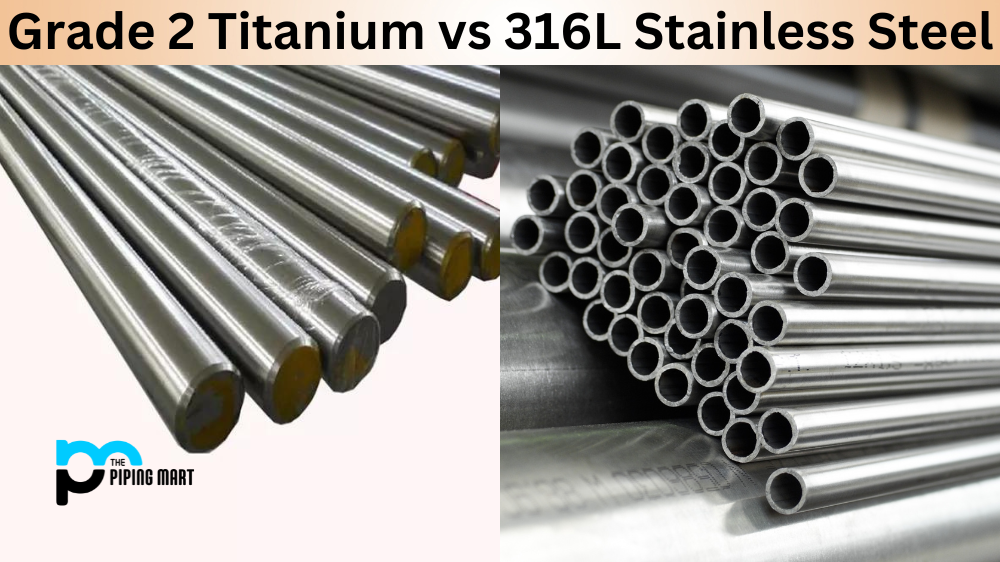When choosing the perfect material for your next purchase, the options can feel overwhelming. Among these options are Grade 2 titanium and 316L stainless steel. These two materials are widely used in various industries, from aerospace to biomedical engineering. But what sets them apart, and which one is better? This blog post’ll dive deep into Grade 2 titanium vs 316L stainless steel and explore why each material stands out.
Difference Between Grade 2 Titanium and 316L Stainless Steel
Basics
Let’s start by understanding the basics of each material. Grade 2 titanium is a type of metallic element that is lightweight, strong, and corrosion-resistant. It is commonly used in the aerospace and marine industries. On the other hand, 316L stainless steel is a type of stainless steel that contains molybdenum and low carbon. It has better corrosion resistance than other stainless steel materials, making it ideal for medical applications.
Strength and Durability
Grade 2 titanium and 316L stainless steel are excellent choices for strength and durability. Grade 2 titanium is incredibly strong for its weight and can withstand extreme temperatures. Meanwhile, 316L stainless steel is tough and highly resistant to corrosion and wear. However, it’s important to note that both materials have strengths and weaknesses depending on the application.
Biocompatibility
Biocompatibility refers to a material’s ability to interact with the human body without causing harm. When it comes to medical implants, biocompatibility is of utmost importance. Grade 2 titanium is an excellent choice for implants because it is biocompatible, non-toxic, and corrosion-resistant. 316L stainless steel, on the other hand, may not be the first choice for implants, but it is often used for temporary implants due to its ease of manufacture and affordability.
Cost
Cost is always a factor when choosing a material for a project. Grade 2 titanium is more expensive than 316L stainless steel. However, it is also more lightweight and has better strength-to-weight ratios. It is also more resistant to chemicals and corrosion. Meanwhile, 316L stainless steel is less expensive than titanium but is heavier and less corrosion-resistant. When choosing between these two materials, it’s essential to consider the specific project’s needs and the budget available.
Application
The application is the final consideration when deciding between Grade 2 titanium and 316L stainless steel. What is the intended use of the material? In aerospace engineering, Grade 2 titanium is often used for parts that require high strength and lightness. Meanwhile, 316L stainless steel is commonly applied in the medical industry, such as surgical tools, medical devices, and implants. While these two materials overlap in their applications, choosing the right material for the intended use is essential.
Conclusion
As we’ve explored with this blog post, Grade 2 titanium and 316L stainless steel are excellent materials with their strengths and weaknesses depending on the application. Grade 2 titanium is known for its strength, lightness, and resistance to corrosion, making it ideal for use in aerospace engineering. 316L stainless steel, on the other hand, is known for its biocompatibility and is often used in the medical industry. The choice between these materials comes from the specific project’s needs and budget.

Hey, I’m Krutik, a casual blogger expert in the metal industry. I am passionate about providing valuable information to my readers. With a background in engineering and construction, I like playing Cricket & watching Netflix shows in my free time. Thank you for visiting my blog, and I hope you find my information helpful!




